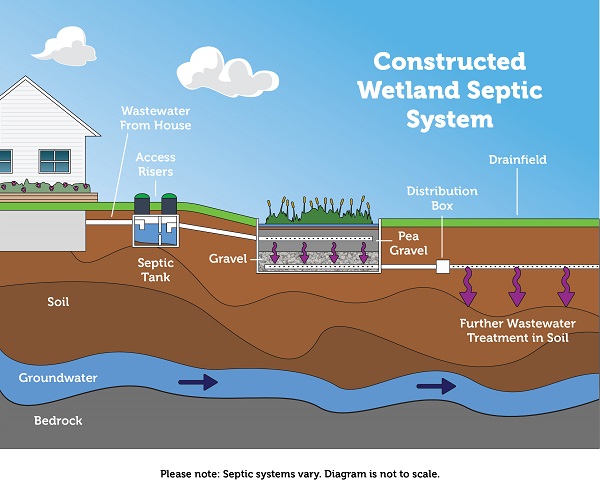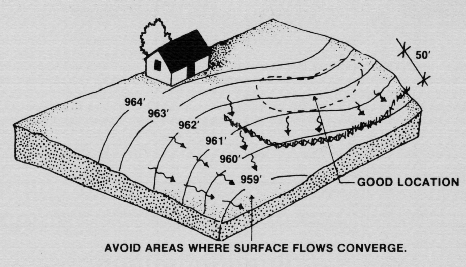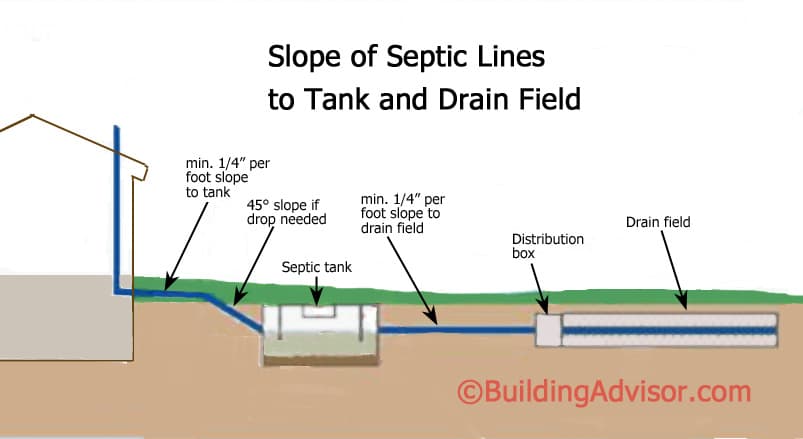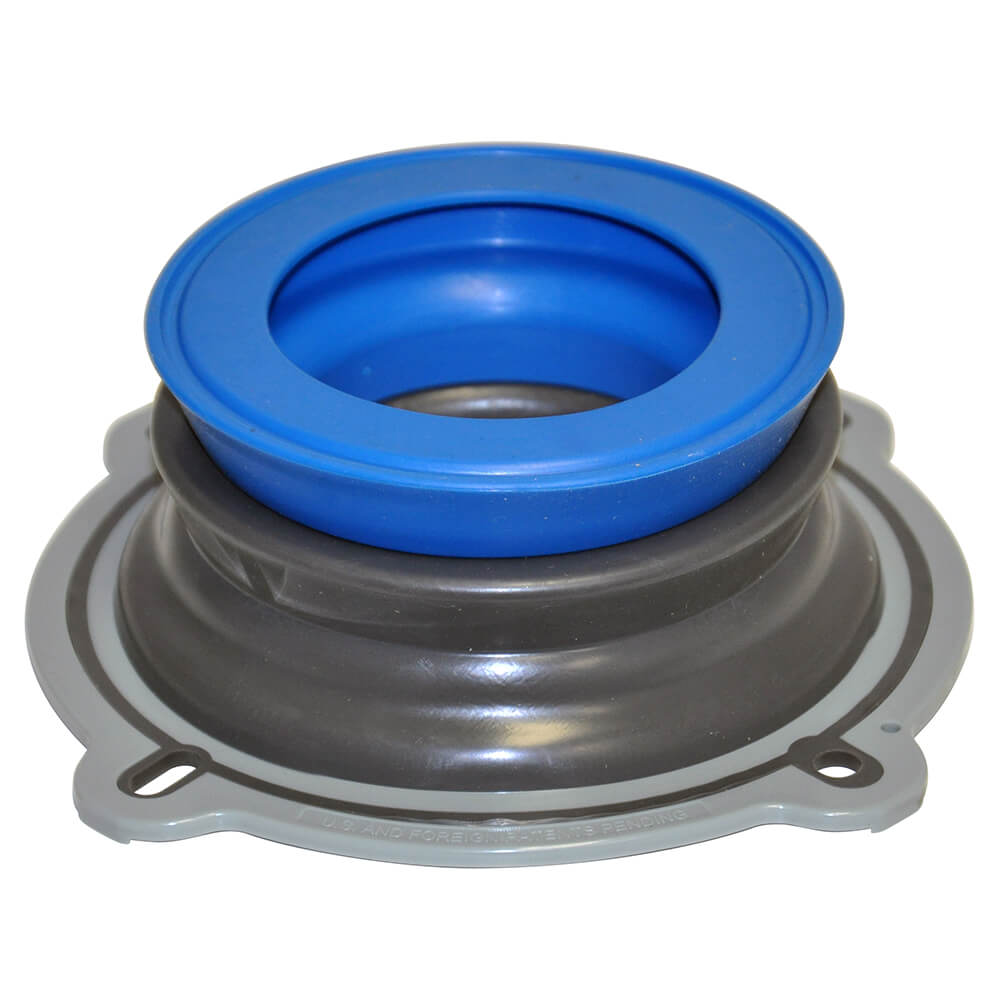Disclosure: This post contains affiliate links and I will be compensated if you make a purchase after clicking through my links. Learn More
Are you planning to install a septic system on sloped land? It might seem like a daunting task, but understanding the right design can save you from future headaches.
Sloped terrains present unique challenges, but with the right approach, you can ensure your system works efficiently. Imagine the peace of mind that comes with knowing your septic system is not only effective but also environmentally friendly. In this guide, you’ll discover essential tips and insights that can make a world of difference.
So, whether you’re building a new home or upgrading an existing system, keep reading to unlock the secrets of septic system design for slopes. Your future self will thank you!

Credit: www.epa.gov
Site Assessment
Designing a septic system on slopes requires careful site assessment. Consider soil type, slope angle, and drainage patterns. Proper planning ensures safe wastewater management and prevents environmental hazards.
When designing a septic system on a slope, the site assessment is crucial for ensuring its functionality and longevity. Understanding the land’s characteristics will help you make informed decisions about the design and placement of the system. Let’s delve into the key areas you need to focus on during this evaluation.
Soil Composition
Knowing the soil composition of your site is like having a roadmap for your septic system design. Different soils have different absorption rates, which can significantly affect how well your system operates. Sandy soils, for example, drain quickly but may not filter waste efficiently, while clay soils retain water, potentially leading to pooling or slow absorption. Conduct a soil test to check for texture, density, and organic matter. This information guides you in selecting the right system and placement that aligns with your land’s natural capabilities.
Slope Analysis
The slope of your land plays a pivotal role in septic system design. Steep slopes can cause wastewater to run off rather than seep into the ground, while gentle slopes may facilitate better absorption. Analyze the gradient of your land with tools like a digital level or consult with a landscape expert. This analysis helps you decide whether to tier your system or use other stabilization techniques. Have you considered how the slope might affect the flow and distribution of wastewater? Thinking ahead can prevent future headaches.
Water Table Considerations
Understanding the water table is essential for preventing contamination and ensuring optimal system function. A high water table may limit the depth at which you can safely place your system, increasing the risk of untreated wastewater mixing with groundwater. Check local records or conduct a test to find out your water table level. Adjust your design accordingly, perhaps by elevating the system or using advanced treatment solutions.
Could there be hidden risks beneath the surface? Being proactive here can safeguard both your property and the environment. Incorporating these assessments into your septic system design plan ensures that your system is not just functional but also sustainable. What unique challenges does your site pose, and how can you address them creatively?
Design Principles
Designing septic systems on slopes requires careful planning to ensure functionality and environmental safety. Proper drainage and soil assessment prevent contamination. An effective design addresses gravity flow and erosion control, ensuring long-term efficiency.
Designing a septic system for sloped land can be tricky. The key is to understand the unique challenges and opportunities that slopes present. A well-designed system will efficiently manage wastewater while ensuring environmental safety.
Gravity Flow SystemsGravity flow systems are often the first choice for sloped properties. These systems rely on the natural slope to move wastewater downhill. It’s a cost-effective and simple approach.
However, the slope must be just right. Too steep, and the flow can become too fast, leading to potential blockages. Not steep enough, and the system may not work efficiently. Imagine walking downhill with a full cup of coffee. If you rush, you spill; if you dawdle, you might as well be on flat ground. The same principles apply here. Proper grading and precise calculations ensure the flow is just right.
Pumped SystemsSometimes gravity isn’t enough. That’s where pumped systems come into play. These systems use a pump to move wastewater uphill or over uneven terrain. They offer flexibility in design, making them perfect for properties with varying elevations. Think of it like a ski lift for your wastewater.
The pump acts as a lift, carrying waste over obstacles and ensuring it reaches its destination. But remember, like any machine, pumps need maintenance. Regular checks can prevent costly repairs down the line. Alternative TechnologiesIn some cases, traditional systems won’t work. Alternative technologies offer innovative solutions. These systems can include aerobic treatment units or constructed wetlands. They adapt to the landscape and environmental needs.
Imagine having a small wetland in your backyard, naturally treating wastewater. It’s a unique solution that adds beauty and function to your property. But are they right for you? Consider your landscape, budget, and long-term maintenance needs.
Choosing the right design principle involves more than just picking a system. It’s about understanding your land, your needs, and your future. What challenges does your property present? How can you turn those into opportunities? With the right knowledge, you can create a septic system that fits your landscape perfectly.
Regulatory Compliance
Designing septic systems for slopes requires careful consideration of regulatory compliance. Proper planning ensures safe waste management and environmental protection. Understanding the regulations is key to creating effective systems on inclined landscapes.
Designing a septic system on a slope requires careful attention to regulatory compliance. This ensures the system functions effectively and meets all legal requirements. Understanding the permits, local codes, and environmental impacts involved is crucial for a successful project.
Permitting Process
Before breaking ground, obtaining the necessary permits is essential. This process can vary greatly depending on your location. Reach out to your local health department to get a clear picture of what is required. Often, you’ll need to submit detailed plans of your septic system design. These plans should demonstrate how your system will handle wastewater on a slope. It’s not just about getting approval, but ensuring your plans protect the environment and community. Have you ever had a project delayed because of missing permits? Avoid this costly mistake by starting the permitting process early.
Local Codes And Standards
Each region has specific codes and standards for septic systems, especially on sloped land. These regulations exist to safeguard public health and the environment. Familiarize yourself with local building codes and ensure your design adheres to them. This not only speeds up the approval process but also avoids potential fines or system failures. Consider collaborating with a local expert. Their experience can be invaluable in navigating complex local requirements.
Environmental Impact
Septic systems on slopes can have significant environmental impacts if not designed correctly. Slopes can increase the risk of wastewater runoff, which may contaminate local water sources. Design your system to minimize these risks. This might include using advanced treatment units or implementing erosion control measures.
Think about the long-term effects. A well-designed system protects not just your property, but the entire ecosystem. What steps will you take to ensure your system is environmentally friendly? Regulatory compliance isn’t just a bureaucratic hurdle. It’s an opportunity to ensure your septic system is safe, efficient, and sustainable.
As you plan your project, keep these elements in mind to avoid pitfalls and create a system that stands the test of time.

Credit: www.extension.purdue.edu
Installation Techniques
Designing septic systems for slopes requires careful planning. Proper installation techniques ensure efficient waste management. Soil stability and drainage are crucial factors in preventing erosion and system failure.
Designing a septic system on a slope presents unique challenges, especially during the installation phase. Getting the techniques right can mean the difference between a smoothly functioning system and a mess of erosion or inefficiency. Let’s dive into some effective installation techniques that ensure your septic system thrives even on tricky terrains.
Excavation Methods
Excavating on a slope requires precision and planning. You can’t just dig randomly and hope for the best. Consider using terraced excavation, which involves creating steps or terraces on the slope. This method helps in managing the earth and reduces the risk of sudden soil shifts.
Another option is using specialized machinery designed for slope work. These machines can provide the extra grip and control needed to handle uneven ground. Be mindful of weather conditions; wet soil can complicate excavation, making it more difficult and potentially dangerous.
System Layout On Slopes
Laying out your septic system on a slope requires thoughtful consideration. Gravity is your ally here, but it can also be an adversary if not managed correctly. Ensure the septic tank is positioned at a higher elevation than the drain field. This natural gravity flow assists in the efficient movement of wastewater.
Consider using a stepped design for the drain field. This approach divides the slope into smaller sections, allowing for more controlled water distribution. Keep an eye on the slope’s gradient; too steep, and you risk wastewater rushing through too quickly, preventing adequate filtration.
Erosion Control
Erosion is a formidable enemy when installing septic systems on slopes. If not managed, it can lead to significant damage and inefficiencies. One effective strategy is to use erosion control blankets.
These are specially designed fabrics that stabilize the soil and promote vegetation growth, which further anchors the earth. Planting native grasses or shrubs can also act as a natural barrier against erosion. Their root systems hold the soil in place, reducing the risk of washouts.
Think about installing diversion ditches or swales to redirect water flow away from critical areas, protecting the integrity of your system. Have you ever considered how a well-designed septic system can impact your property value?
Proper installation and erosion control not only ensure functionality but can also enhance your land’s appeal. So, what’s stopping you from turning that challenging slope into a well-functioning asset?
Maintenance Strategies
Maintaining a septic system on a slope requires careful planning. Proper maintenance ensures the system functions efficiently. Neglect can lead to costly repairs and environmental harm. A few key strategies can help keep your system in top shape.
Routine Inspections
Regular inspections are crucial for slope septic systems. Inspect tanks for leaks and blockages. Check for any signs of system failure. Early detection prevents larger problems. Schedule professional inspections at least once a year. This proactive approach saves money and stress.
Troubleshooting Common Issues
Sloped systems face unique challenges. Drainage problems are common. Watch for water pooling near the drain field. This may indicate a blockage. Unusual odors can also signal issues. Address these quickly to avoid system damage. Consult a professional if needed.
Seasonal Adjustments
Seasons affect septic system performance. In winter, pipes may freeze. Insulate exposed pipes to prevent this. In heavy rain, watch for flooding near the system. Adjust water usage during these times. Simple changes can prevent system overload.
Cost Considerations
Designing a septic system for slopes involves careful planning, and understanding the costs is crucial. Whether you’re building on a hillside or a gently sloping terrain, cost considerations can impact your budget and future expenses. Let’s dive into what you should keep in mind.
Initial Investment
Building a septic system on a slope often requires more upfront costs compared to flat land. You might need specialized equipment and materials to ensure stability and proper drainage. These can add a significant amount to your initial investment.
Consider hiring a professional with experience in slope design. This expertise can prevent costly mistakes and ensure the system functions efficiently from the start. Investing in quality early on can save you from headaches later.
Long-term Savings
While the initial investment may seem daunting, a well-designed system can lead to long-term savings. Efficient systems reduce maintenance costs and extend the lifespan of your septic system. Proper design also minimizes environmental impact, helping you avoid fines or costly repairs.
Think about how much you could save over the years with a system that requires fewer repairs. Would you prefer spending a bit more now to avoid frequent service calls? This perspective can guide your decision-making process.
Potential Upgrades
As technology advances, consider potential upgrades that might enhance your septic system’s efficiency. Installing advanced treatment units or monitoring systems can optimize performance. While these upgrades might cost more initially, they can lead to savings down the road.
Are you prepared for future changes in regulations? Upgrading your system could make compliance easier and more cost-effective. Keeping an eye on emerging solutions ensures your system remains efficient and adaptable.
Understanding the cost considerations for septic system design on slopes requires balancing initial investments with long-term savings. By planning wisely and considering potential upgrades, you can create a system that serves your needs efficiently and sustainably.

Credit: buildingadvisor.com
Frequently Asked Questions
How Does Slope Affect Septic System Design?
Slope impacts drainage and soil stability. Systems on slopes need careful planning to prevent erosion and ensure proper function.
What Types Of Septic Systems Work Best On Slopes?
Gravity and pressure systems are ideal. They help move waste uphill or downhill efficiently, depending on the slope.
Can Septic Systems Be Installed On Steep Slopes?
Yes, but they require special design. Engineers use terracing and pumps to manage wastewater on steep slopes.
Why Is Soil Testing Important For Sloped Septic Systems?
Soil testing ensures proper drainage. It identifies soil types and helps design systems that function correctly on slopes.
Final Words
Septic system design on slopes requires careful planning. Slopes can challenge installation. Proper design prevents issues. Consider soil type and slope degree. Ensure efficient drainage. Consult experts for guidance. Regular maintenance keeps systems working well. Protect your land by choosing the right design.
A well-designed system promotes environmental health. It also saves money in the long run. Good planning leads to effective waste management. Keep your slope safe and clean. Remember, a sturdy design means fewer problems. Choose wisely to maintain your property’s value.


